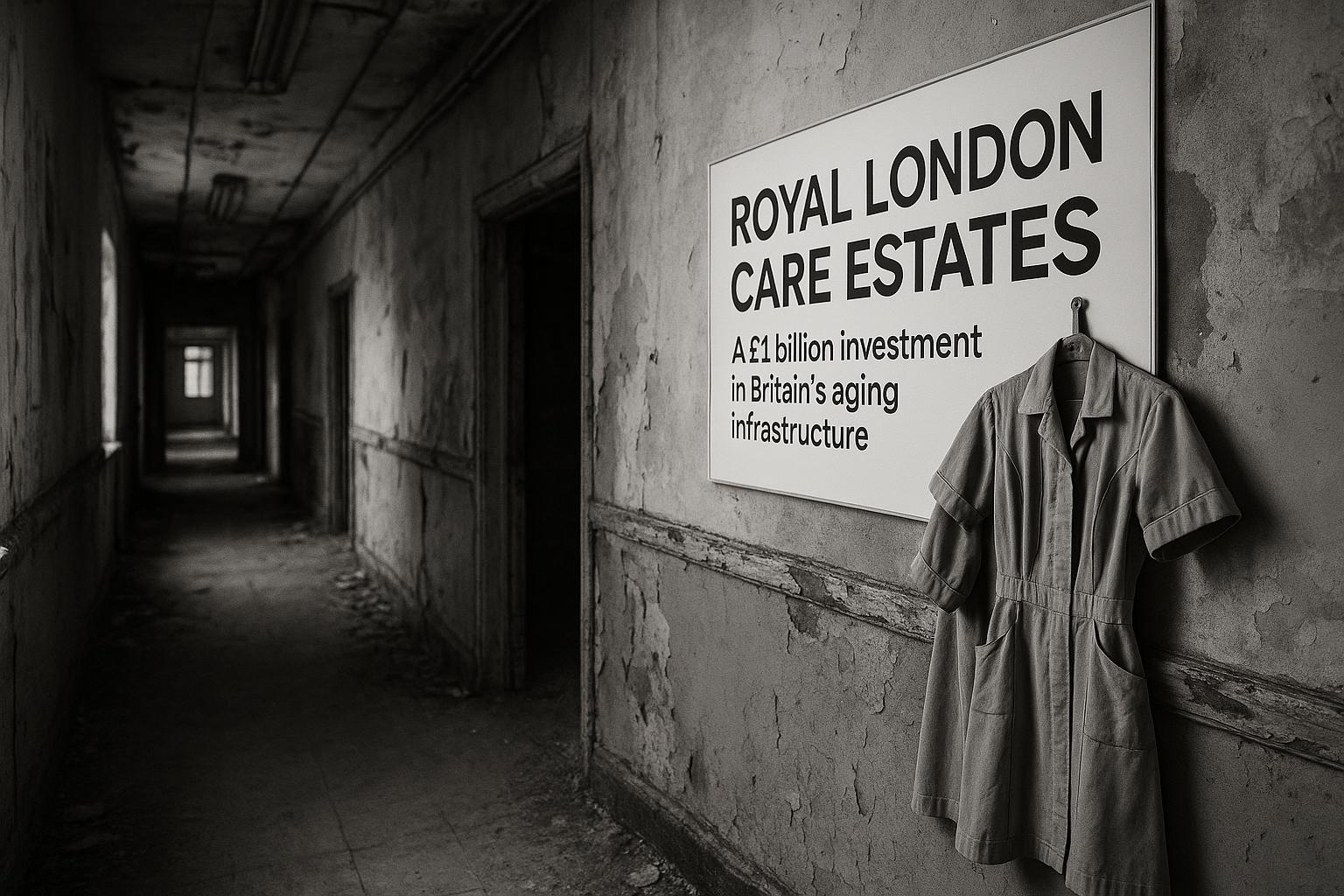Royal London Asset Management (RLAM) has launched a pioneering £1 billion investment strategy targeting the UK care home property sector, an area where institutional investors have been largely absent despite the pressing demographic demand. With Britain’s ageing population steadily growing, the care home market presents a unique investment opportunity, yet more care homes are closing than opening across the country. RLAM aims to change the investment landscape through a specially formed non-listed Real Estate Investment Trust (REIT) that focuses on high-sustainability, purpose-built care home properties throughout the UK.
The REIT, established on 1 October, serves as a platform to consolidate RLAM’s healthcare property portfolio and attract third-party capital while utilising tax-efficient mechanisms. Mark Evans, RLAM’s Head of Property and Commercial Development, highlighted that the REIT structure allows the rebasing of capital gains from developer-held assets, thus eliminating tax liabilities and making acquisitions more financially viable. So far, RLAM has deployed around £350 million across 25 care homes in England, working with seven different operators, and plans to invest up to £1 billion initially, with annual targets of £200 million to £300 million in new development projects.
The UK care home market, valued at approximately £26 billion as of December 2024, is highly fragmented. The independent sector accounts for 90% of care home supply across the country, split between 78% for-profit and 12% not-for-profit organisations. The largest ten for-profit providers control about 18% of the market, while small and medium-sized providers make up the majority of bed capacity. This diverse landscape opens numerous opportunities for investment, particularly in modern, purpose-built facilities that align with RLAM’s sustainability goals, which include features such as solar panels, ground-source heat pumps, and battery storage to enhance energy efficiency and reduce operating costs for tenants.
Beyond financial returns, RLAM emphasises the social importance of these investments. Evans noted that their mutual ethos drives investment decisions, focusing on sectors that endure and align with demographic trends like ageing populations. Their healthcare property investments offer bond-like security with long lease terms—typically 30 to 35 years—and rental agreements indexed to retail price inflation. These stable income streams appeal to institutional investors seeking socially responsible, low-risk returns. RLAM also works closely with its healthcare delivery partner Shoreline Partners, which was integrated in-house recently, to monitor operational risks and ensure quality and resilience among care operators, including staff stability and cost management.
The UK care home sector itself has seen a surge of capital inflows recently, reaching record levels. Investment volumes hit £4 billion in the 12 months since July 2024 and £1.75 billion in the first half of 2025 alone, more than doubling the previous year’s figures. This robust activity has been driven predominantly by United States investors, who accounted for over 70% of transactions in the first half of 2025, up from 56% the year before. US firms have been attracted by the market’s strong fundamentals, including high occupancy rates nearing 90% and rising care fees. These fees, often subsidised by councils and paid by residents, hit a record average weekly rate of £1,260 in early 2025, influenced by increases in the National Living Wage and Employers' National Insurance costs.
Cushman & Wakefield, which tracks healthcare real estate markets, notes heightened interest not only in premium care home assets but also in midmarket properties, with investors targeting Grade B and C stock due to its fragmented ownership and attractive pricing. The investment environment is marked by notable high-value portfolio transactions such as CareTrust REIT’s £640 million acquisition of Care REIT, signalling confidence in long-term sector prospects despite operational cost pressures.
Analysis by property experts like Savills corroborates the UK’s status as Europe’s most attractive care home investment market, due to strong fee uplifts, relatively low bed supply, and a diverse array of real estate portfolios. This favourable environment, coupled with RLAM’s strategic approach combining sustainability, demographic alignment, and a mutual ethos, positions the asset manager to play a significant role in addressing the UK’s care home supply shortage while delivering stable, socially responsible returns to investors.
📌 Reference Map:
- Paragraph 1 – [1] (Bisnow), [2] (Bisnow)
- Paragraph 2 – [1] (Bisnow), [2] (Bisnow)
- Paragraph 3 – [1] (Bisnow), [2] (Bisnow)
- Paragraph 4 – [1] (Bisnow), [2] (Bisnow)
- Paragraph 5 – [1] (Bisnow), [3] (Insider Media), [4] (Estates Gazette), [6] (The Carer UK)
- Paragraph 6 – [1] (Bisnow), [4] (Estates Gazette), [5] (Savills)
Source: Noah Wire Services
